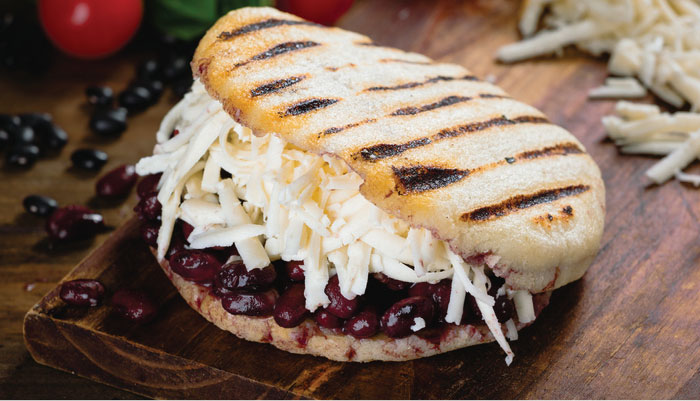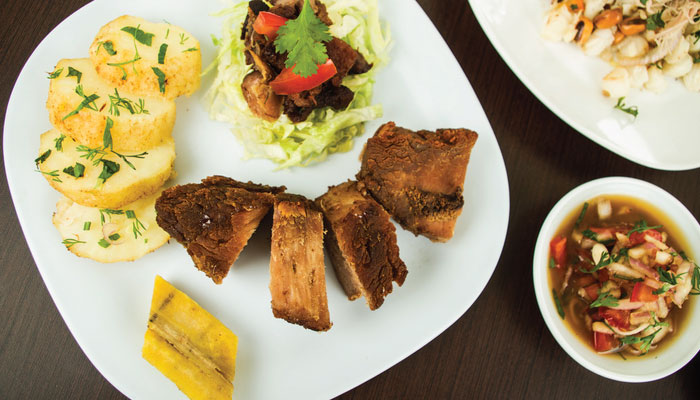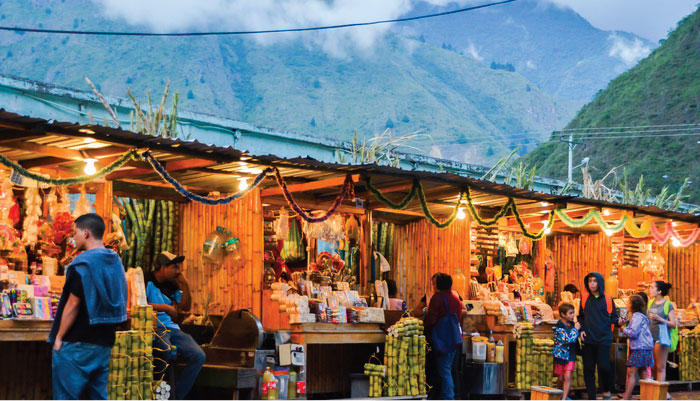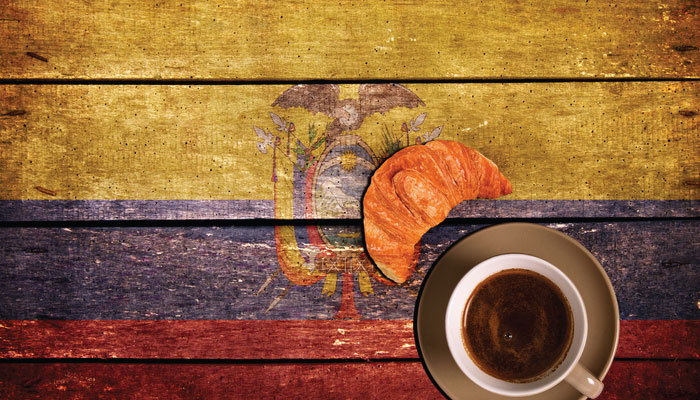Festivities play a fundamental role in Ecuadorian traditions, where food brings families joyously together.
Various celebrations, such as the Easter Holy Week and the Day of the Dead, are famed for a soup or chichi, which is a fermented drink.
Typical Ecuadorian dishes have a significant Spanish basis and influence, but they also draw inspiration from the foods, recipes and ingredients from the diverse indigenous ethnic groups that still coexist in the Latin American territory. In other words, Ecuadorian cuisine has significant cultural richness, owing to the geographic configuration of the country.
Below is a list of 5 of the most famous and delectable delicacies that you mustn’t miss out on.

Typical food from Quito
These dishes are eaten during the fiestas of Quito, which take place at the start of December. A huge range of gastronomic festivals are held at different points in the city, where attendees can sample typical dishes such as the fritada braised pork, hornado roast pig, potatoes with skin, quimbolito cakes and other common delicacies of the city.

Fanesca
The fanesca is a vegetable stew eaten during the Easter Holy Week. There are many theories regarding its origins and meaning, with the most popular being that the 12 grains represent the 12 apostles of Jesus Christ, with the bitter lupin representing the betrayal of Judas. The other ingredients, such as the boiled egg, empanadas and plantain symbolise non-believers, who don’t participate in the preparation but are welcome to celebrate the tradition.
Colada morada
For this celebration, which takes place on 2 November, loaves of bread shaped like people – called guagas, meaning “children” – are prepared, decorated with a glazing of egg white and sugar, with faces and other details added later.
This delicacy is accompanied with a thick aromatic drink called colada morada (purple strained drink), which is made from purple corn flour, mortiño blueberries, strawberries, cloves, lemon verbena, cinnamon and other magical and typical ingredients.
Holy Thursday black cake
The Holy Thursday black cake is eaten on the afternoon of Holy Thursday, before the Good Friday fasting. Thanks to its filling ingredients – panela cane sugar, ground rice, butter, sesame seeds, ground roasted peanuts, ishpingo (spice) and eggs, among others – this is an efficient way to ensure that an absolute fast is held the following day.
This dish was first served in 1830, but this custom has gradually lost popularity over the years. However, Cuenca’s Municipal Tourism Foundation recently made bring the flavours of the Easter Holy Week back into the public domain, which is how this delicious cake regained its position in traditional gastronomy.
Corpus Christi
This is one of, if not the most important spiritual and cultural event in Cuenca, the third biggest city in Ecuador.
Over seven days, the aroma of traditional sweets takes over Calderón Park in the centre of the city, made from family recipes that have been passed from grandmother to mother to daughter. The ingredients include panela cane sugar, sesame seeds, eggs, aniseed, ishpingo and cinnamon, among others. Separately, these might not sound like the tastiest ingredients, but when combined they result in delicious sugar-coated roscas and the traditional huevos de faltriquera, among others.







